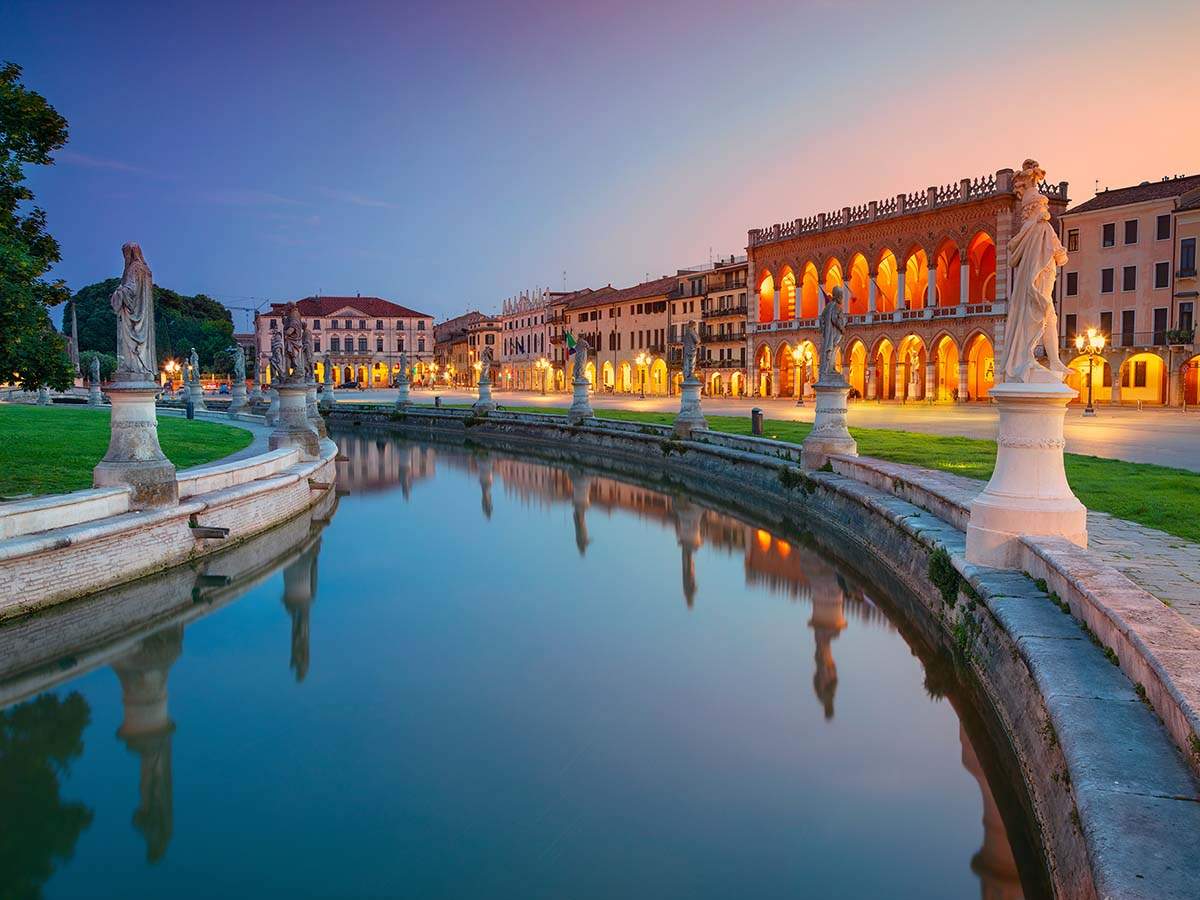Padua is the perfect city to discover the path of Humanity towards scientific and technological progress in virtue of Knowledge and Creativity.

Padua is the perfect city to discover the path of Humanity towards scientific and technological progress in virtue of Knowledge and Creativity.
Since 1222, when the Studio Patavino was officially founded, scientific and technological progress has been advancing through fundamental historical phases, thanks to grand figures and to an environment characterised by total freedom and lively cultural activity.
The Botanical Garden. Its founding was requested in 1545 by school of medicine of the University of Padua. It is the most ancient university botanical garden of the world which has maintained its original location. Founded to study medicinal plants, the Garden has witnessed the evolution of Botany from being a science connected to Medicine to the various modern branches. It still hosts an intense teaching and informative activity, various research activities and, among others, some rare and endangered species. In the Garden, approximately 6000 plants are grown, including exotic, medicinal, poisonous and insectivorous plants. The most ancient plant of the Garden is a St. Peter’s palm (Chamaerops humilis var. arborescens) planted in 1585. It is called Goethe’s Palm since 1786, when the poet, after studying it, described his evolutionary intuition in hid essay The Metamorphosis of Plants. The Garden is also connected to a library, in which various historical herbals, scientific essays and precious illustrated texts are kept, including some single copies. Since 1997 it has been on the Unesco World Heritage list.
Museum of Medicine and Health History
It is located in the fifteenth-century St. Francesco Grande Hospital and shows the record of the rich tradition and evolution of Health Care and Medical Science in Padua.
An interactive museum, perfect for school trips!
It i salso possible to visit it virtually: www.musme.padova.it
Looking at the sky through the eyes of Galileo Galilei
La Specola, the Observatory tower, is the Mecca of all astronomy students and of those who love the views from above. It was built during the second half of the eighteenth century, in order to grant the University of Padua an astronomical observatory which could allow to test astronomic theories, thus starting a modern approach to Astronomy. Located in the Torlonga, an ancient tower belonging to the wall system of the castle of the city, la Specola is nowadays the location of an interesting museum, which shows, among other pieces, the big Sundial of Padua, observation tools created by English craftsmen during the eighteenth century, German and Austrian telescopes and tools used for metereological studies.
Visit information: http://www.padovanet.it/informazione/visite-guidate-alla-specola
The University of Padua, one of the most ancient of the world (the second in Italy, after that of Bologna), is an authentic archetype of the modern university and it represents the fulcrum of the scientif path of the city. The historical location, the Bo, keeps the most ancient anatomical theatre of the world and some historical sites and excellent antiques, such as the fourteenth-century Medicine Room, Galilei’s desk, who taught there from 1592 to 1618, the Great Hall and the double cloister wonderfully decorated with the emblems of illustrious students and professors. There are busts, memorial stones, inscriptions, statues and paintings to witness the presence of great figures in the history of the University of Padua, such as Pietro d’Abano, Nicolò Copernico, William Harvey, Andrea Vesalio, Gabriele Falloppio, Galileo Galilei, Fabrizio d’Acquapendente, Giovan Battista Morgagni, to mention just some of them. The elegant statue of Elena Lucrezia Cornaro Piscopia is a tribute to the first woman in the world who achieved a University Degree, graduating in 1678 in Philosophy at the University of Padua.
The Scrovegni Chapel, a fourteenth-century masterpiece of the Italian and European painting, is considered the most complete cycle of frescoes made by the great artist Giotto in his mature age. Colour and Light, Poetry and Pathos. Man and God. The sense of nature and history, of humanity and faith, all merged together to narrate the stories of the Virgin Mary and Christ in a unique way.
Info Ticket -> http://www.cappelladegliscrovegni.it/index.php/it/
Shops, pedestrian areas, the squares, the daily markets...and typical places to stop and have a good Prosecco or a SPRITZ!
Piazza Della Frutta and Piazza delle Erbe with Palazzo della Ragione, are a meeting point for the citizens, with their morning markets and the old shops Sotto il Salone.
Piazza dei Signori with its wonderful Clock, is, instead, a meeting point for the youngest, who go there for the Spritz time.
The famous Caffè Perdocchi, designed by the venetian architect Giuseppe Jappelli, is a true architectonic masterpiece located at the centre of the city, between the main streets dedicated to shopping.
Padua is easy to reach from the hotel by bus, M line.
The tickets and schedules are available at the reception.